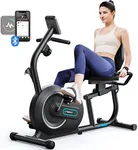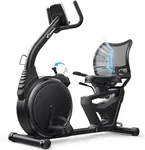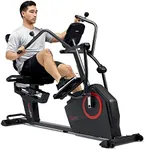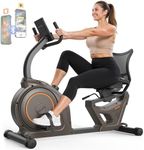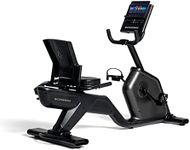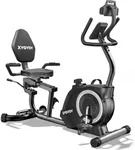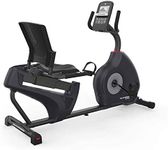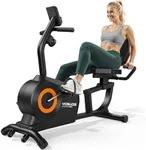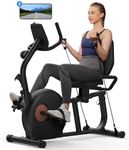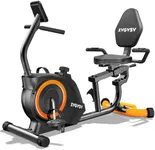Buying Guide for the Best Recumbent Exercise Bikes
Choosing a recumbent exercise bike is a great decision for those who want a comfortable and effective indoor workout. These bikes allow you to sit in a reclined position, which reduces stress on your joints and back. When shopping for a recumbent exercise bike, it’s helpful to think about your fitness goals, how much space you have, and comfort preferences. Rather than focusing only on brand names or appearances, pay attention to the key features that will provide the best experience for your needs.Seat Comfort and AdjustabilitySeat comfort is essential since you’ll likely spend long periods on the bike. A well-cushioned, wide seat with proper back support makes your workout more enjoyable and lessens the risk of soreness or discomfort. The ability to adjust the seat forward or backward helps you reach the pedals comfortably, which is crucial for different body sizes. If you’re taller, a bike with extensive adjustability is important, while those of average or shorter height should still check that the seat allows you to pedal without stretching or cramping. Always ensure the seat can be adjusted to suit your leg length and sitting posture.
Resistance LevelsResistance levels determine how hard it is to pedal and directly affect your workout intensity. Most recumbent bikes use magnetic or mechanical resistance. Lower-end bikes might offer limited levels, best suited for gentle exercise or rehabilitation. Mid-range models provide more choices, helping you gradually increase difficulty as you progress. Higher-end bikes often have 20 or more settings, ideal for serious training or interval workouts. Consider your current fitness level and long-term goals; if you want steady, challenging workouts, look for a bike with a wide range of resistance levels to keep up with your progress.
Display Console and ProgramsThe display console shows your workout metrics, like time, speed, distance, calories burned, and heart rate. A larger, clear console makes it easy to check stats while riding. Many bikes also include pre-set programs that automatically adjust resistance to simulate hills or intervals, keeping workouts interesting and varied. If you prefer guided workouts or like tracking progress, look for bikes with diverse program options and a user-friendly display. Simpler consoles are fine if you only need basic tracking.
Size and PortabilityRecumbent bikes range in size and weight. Compact models fit well in smaller spaces, while larger ones provide more stability but need more room. If you’ll be moving the bike often, look for transport wheels or a lighter build. Measure your available space first to ensure a good fit in your preferred workout area. Heavier bikes tend to be sturdier and less likely to wobble during use, which is important if you plan to pedal vigorously.
Weight CapacityThis spec tells you the maximum user weight the bike can safely support. Entry-level models might support less weight, while sturdier bikes have higher limits, usually ranging from 250 up to over 400 pounds. Always check that the bike’s capacity is comfortably above your own weight to ensure durability and safe usage over time.
Pedal Design and StrapsPedals should be wide and textured, often with adjustable straps to keep your feet secure as you ride. For comfort and safety, choose pedals that fit your foot size and provide a firm grip. This is especially important if you plan longer sessions or intense cycling, as slipping feet can disrupt your workout or cause injury.
Heart Rate MonitoringMany recumbent bikes have integrated sensors on the handles or wireless heart rate monitoring, letting you track your pulse during exercise. Accurate monitoring helps you stay within your desired workout zone, which is useful for both fitness enthusiasts and those monitoring their health. If tracking heart rate is important to you, make sure the bike offers this feature and that you find the sensors easy to use.
